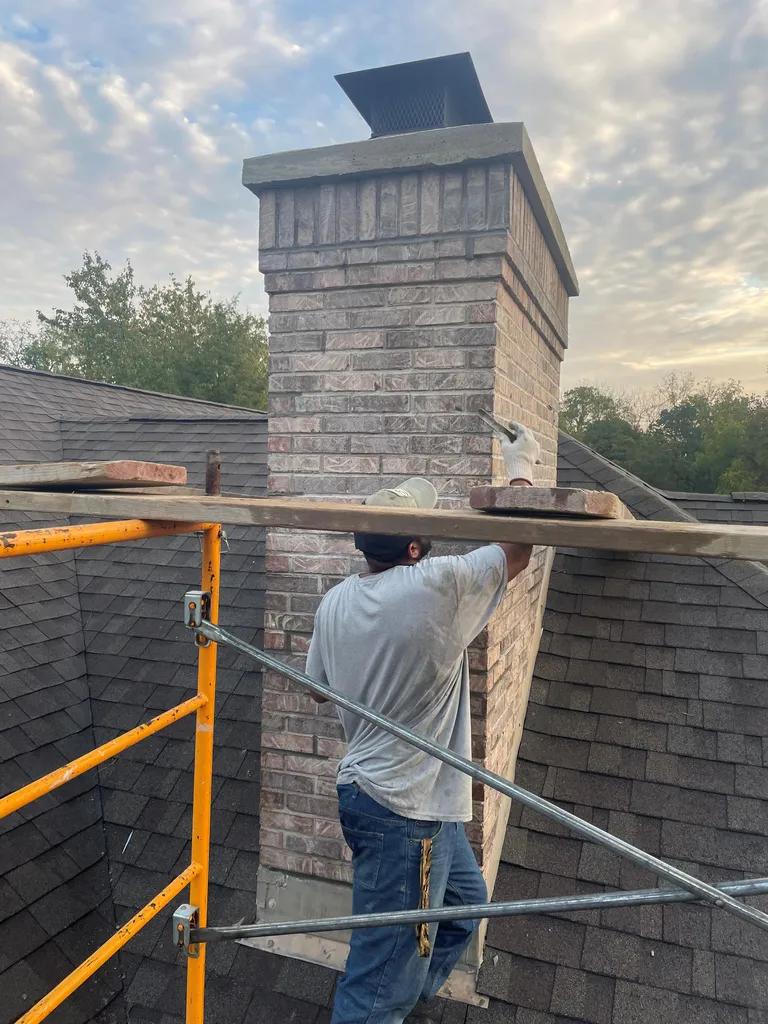As homeowners and property owners strive to ensure the longevity and structural integrity of their buildings, one important maintenance task often overlooked is tuckpointing. Specifically, when it comes to block walls, tuckpointing plays a crucial role in enhancing durability and preventing deterioration. In this article, we will explore the importance of tuckpointing block walls, the process involved, and how it can effectively extend the lifespan of your property.
Table of Contents
- The Importance of Tuckpointing for Block Walls
- Key Steps for Properly Tuckpointing a Block Wall
- Choosing the Right Materials for Tuckpointing
- Common Mistakes to Avoid when Tuckpointing a Block Wall
- Q&A
- Insights and Conclusions

The Importance of Tuckpointing for Block Walls
Tuckpointing is a crucial maintenance task that can significantly enhance the durability and appearance of block walls. By filling in deteriorating mortar joints with new material, tuckpointing helps to protect the structural integrity of the wall and prevent water intrusion. This process not only improves the overall strength of the wall but also helps to maintain its aesthetic appeal.
Regular tuckpointing can extend the lifespan of block walls, ultimately saving you time and money on costly repairs in the long run. Additionally, properly maintained mortar joints can help to prevent issues such as water damage, mold growth, and structural instability. Investing in tuckpointing for your block walls is a smart decision that will not only improve their durability but also enhance the overall value of your property.

Key Steps for Properly Tuckpointing a Block Wall
When it comes to enhancing the durability of your block wall, properly tuckpointing is essential. Tuckpointing not only improves the overall appearance of the wall but also helps in preventing water damage and prolonging the life of the structure. Follow these key steps to ensure you are tuckpointing your block wall correctly:
- Prepare the Surface: Start by cleaning the existing mortar joints thoroughly using a wire brush and water. Make sure to remove any loose debris or old mortar to create a clean surface for the new mortar to adhere to.
- Apply New Mortar: Mix the new mortar according to the manufacturer’s instructions and apply it to the joints using a tuckpointing trowel. Pack the mortar tightly into the joints, making sure to fill them completely and create a smooth, even finish.

Choosing the Right Materials for Tuckpointing
When it comes to tuckpointing a block wall, selecting the right materials is crucial in order to enhance durability and ensure long-lasting results. The materials you choose will play a significant role in the overall quality and effectiveness of the tuckpointing job. Here are some key factors to consider when selecting materials for tuckpointing a block wall:
- Type of Mortar: Choose a high-quality mortar that is specifically formulated for tuckpointing applications.
- Color: Select a mortar color that closely matches the color of the existing mortar to ensure a seamless finish.
- Water Repellent Additives: Consider using mortar with water repellent additives to protect the block wall from moisture and water damage.

Common Mistakes to Avoid when Tuckpointing a Block Wall
When tuckpointing a block wall, it is essential to avoid some common mistakes that can compromise the durability and appearance of the structure. One common mistake is using the wrong mortar mix. Make sure to use a mortar mix that is compatible with the existing mortar to ensure proper adhesion and longevity. Another mistake to avoid is using the wrong tools. Using the correct tools, such as a pointing trowel and a jointer, will help you achieve a neat and precise finish.
Additionally, rushing the tuckpointing process can lead to mistakes and uneven joints. Take your time to carefully remove deteriorated mortar and fill in the joints with new mortar. It is also important to ensure that the mortar is properly hydrated and cured to prevent cracks and weak spots. By avoiding these common mistakes and following best practices, you can enhance the durability and aesthetics of your block wall.
Q&A
Q: What is tuckpointing and why is it important for block walls?
A: Tuckpointing is a process of repairing and enhancing the durability of mortar joints in block walls. It helps prevent water penetration and structural damage.
Q: How often should tuckpointing be done on block walls?
A: Tuckpointing should be done every 5-10 years, depending on the condition of the mortar joints and exposure to weather elements.
Q: What are the benefits of tuckpointing for block walls?
A: Tuckpointing helps maintain the structural integrity of block walls, enhances their appearance, prevents water damage, and extends their lifespan.
Q: Can tuckpointing be done as a DIY project?
A: While tuckpointing can be done as a DIY project, it is recommended to hire a professional for best results, especially for larger or more complex projects.
Q: How long does tuckpointing typically take to complete?
A: The time it takes to complete tuckpointing on a block wall depends on the size and condition of the wall, but it usually takes a few days to a week to finish.
Q: What factors should be considered when hiring a professional for tuckpointing?
A: When hiring a professional for tuckpointing, consider their experience, reputation, pricing, and the quality of their previous work to ensure a successful and long-lasting result.
Insights and Conclusions
In conclusion, tuckpointing is a highly effective method for enhancing the durability and structural integrity of block walls. By repairing and maintaining the mortar joints, you can prevent water infiltration, cracking, and erosion, ultimately prolonging the lifespan of your wall. Regular inspection and maintenance is key to preserving the strength and stability of your block wall. If you notice any signs of deterioration, it is important to address them promptly to avoid more extensive and costly repairs in the future. With proper care and attention, your block wall can continue to withstand the test of time. Thank you for reading and we hope you found this information helpful in maintaining the durability of your block wall.


